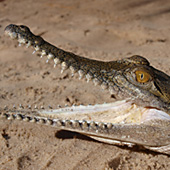Life is amazing, all life, every species that is on this planet has evolved to live perfectly in its own unique ecological habitat – a specific biome with ideal living conditions, which includes plants, animals, and temperatures conducive to a healthy working ecosystem. It’s truly amazing.
Interesting, some species are adaptable and can adjust to live in other biomes with similar plants and temperature ranges. And, there are even species of animals that are hardy enough to live in nearly any environment, such as rats, rodents, dogs, and countless types of insects.
While it’s true that there are some ‘tough’ species of animals that do migrate to other types of climate, and some that can survive in nearly all but freezing temperatures, most animals species cannot. That is one of the key factors of wildlife conservation – to preserve animal species by protecting their habitat. When an animal’s natural habitat is gone, they usually disappear from the face of the planet, or end up imprisoned in zoos.
It’s unfortunate that the forces driving humans to develop land that devastates the fragile, balanced habitat of animals is financial in nature. Because of this growing trend of ever-expanding land development, motivated by financial gain, many species have become extinct. This is due to either over developing land, hunting a species to extinction, or now by climate change and global warming, which is caused by collective pollution generated from industries and cities around the world.
Protecting Animals and Their Habitat through Wildlife Conservation
As global warming rises, temperatures are changing, and that in turn changes precipitation and sea level, which forever alters the habitat of species faster than they can adapt, or they are unable to adapt, and animals die. For example, in Australia, koalas cannot live ‘naturally’ without the presence of eucalyptus, so what endangers eucalyptus also endanger koalas. Everything in an ecosystem is connected, and when this balance is disturbed, animals begin to disappear, forever.
This is why it is paramount to bring awareness to wildlife conservation in a way that helps people to see that every action to develop land, and the way industries and cities are producing pollution, needs to change. Because, if temperatures continue to change on the planet, and biomes and animal habitats disappear, the future of humanity becomes bleak.

